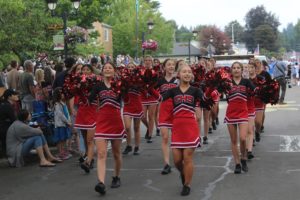Dozens of Camas-Washougal firefighters, many sporting their union’s red and black International Association of Fire Fighters (IAFF) t-shirt, packed into a Camas City Council meeting Monday night to appeal directly to city leaders for help with a fire department they say is understaffed, underfunded and putting first responders — and Camas-Washougal residents — in danger.
Firefighter Dale McKenzie was one of several speakers who addressed Camas councilors on Monday. A veteran firefighter with more than 25 years’ worth of experience, McKenzie said he worries not only about his fellow and sister firefighters’ safety, but for his family, which includes a child who has special needs.
“What happens if there is a fire at my house and my wife is trying to get our son out of the house? What if, when these guys show up, they don’t have enough (firefighters) to help safely?” McKenzie asked councilors on Monday.
Like the other speakers who came to the council meeting, McKenzie said he wants to see the Camas-Washougal Fire Department (CWFD) move away from its policy of having only two firefighters responding to calls generated by home fire alarms, versus a 911 call.
CWFD Chief Nick Swinhart explained Tuesday that fire department commanders moved to the two-firefighters-and-one-engine model about three or four years ago, after commanders realized nearly 100 percent of the calls generated by home fire alarms turned out to be false alarms.


